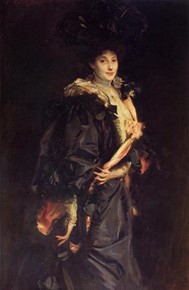Gæsteforelæsning: Susan Sidlauskas, Rutgers University
The Limits of Painted Form: John Singer Sargent’s Lady Sassoon (1907, private collection)
Oplysninger om arrangementet
Tidspunkt
Sted
Building 1584, Room 112

Wednesday 12. October, at 14:15. Building 1584 (Kasernen) Room 112
Susan Sidlauskas, Rutgers University:
The Limits of Painted Form: John Singer Sargent’s Lady Sassoon (1907, private collection)
John Singer Sargent is most often identified through precisely the kinds of portraits that have guaranteed his exclusion from the pantheon of modernism. Roger Fry’s much-quoted insistence upon Sargent’s irrelevance lingers; in fact, Fry and his peers expressly defined modernism against Sargent, a reductive view that has been reinforced by such emblems as Alfred Barr’s outdated but influential grid tracking the heroic, inevitably male, “discovery” of abstraction. Instead, I’d like to suggest that this painter, at his most ambitious, generated a subversive, even avant-garde practice that succeeded on its own terms—especially in the later portraits for which he is often reviled. The focus of my talk will be Sargent’s Portrait of Aline Sassoon of 1907, which offers what is perhaps the artist’s most radical experiment in overturning conventional figure/ground distinctions, even as he tested the conceptual and mimetic limits of painted form. It is worth noting that the painting was made during the same year in which the artist publicly proclaimed that he was forever done with portraiture. It is my contention that Sargent did not simply bear witness to the Gilded Age finery around him; he engineered its pictorial disintegration through a process in which skin, hair and fabric dissolved only to be reconstituted as other, more ambiguous substances. At its best, Sargent’s transformative practice dissolved the distinctions between his subjects’ anatomical “selves” and the material trappings that consolidated their social identities. In so doing he challenged not only the separability of the two, but the distinction between “figure” and “ground”— modernism’s signature move. In his pictorial dismantling of the figure, and the “rebuilding” he effected through fluidly interpenetrating forms and voids, I would argue that certain key paintings of Sargent’s betray as deep a skepticism about the stability of the fin de siècle subject as Paul Cézanne’s.
